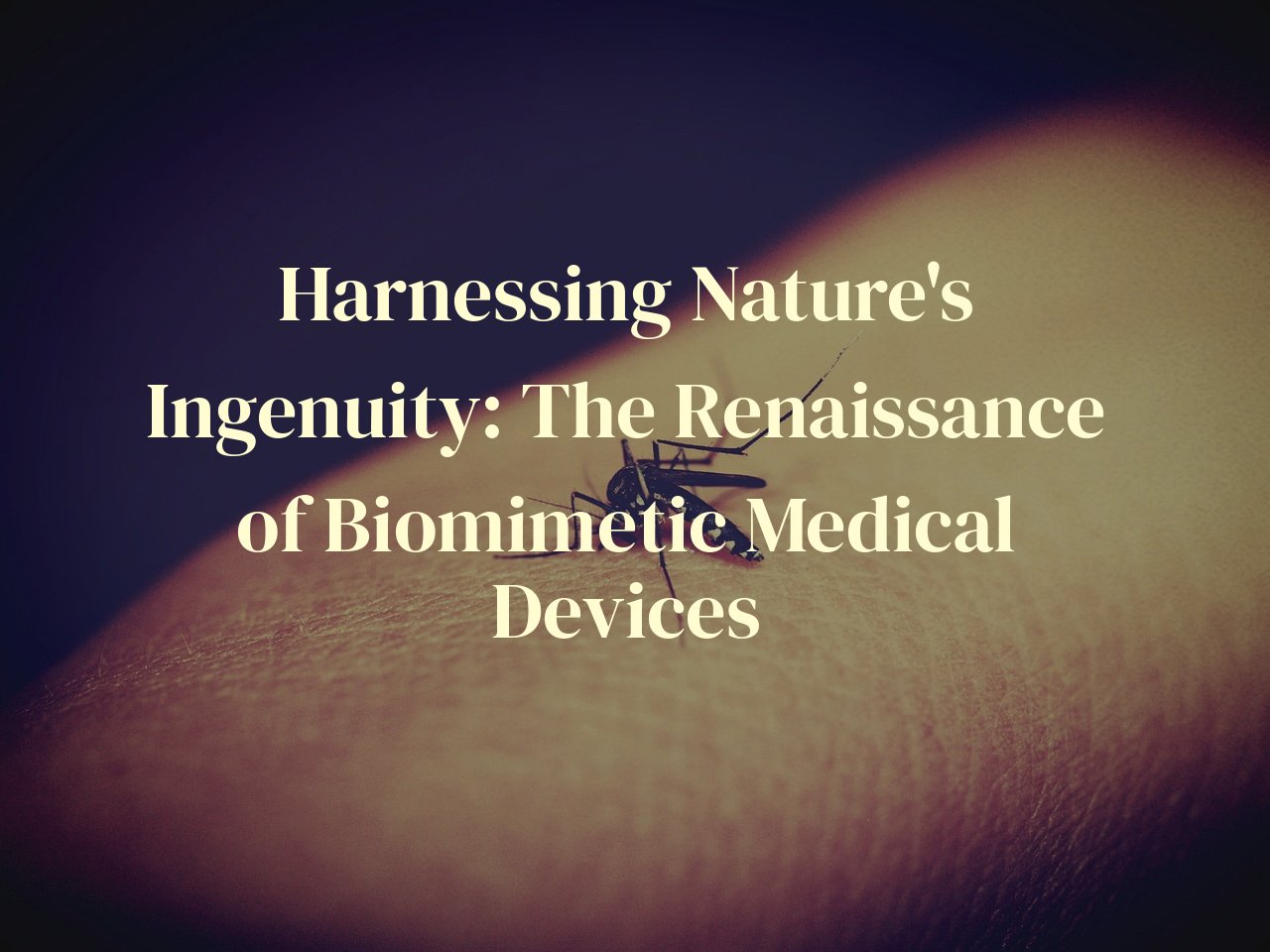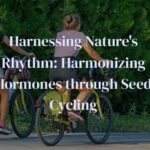
In the quest to advance medical technology, inspiration often stems from the sophisticated workings of the natural world. This blog post delves into the intriguing concept of borrowing designs from nature to revolutionize the medical device industry. By exploring the fusion of biology with engineering, we uncover groundbreaking nature-inspired solutions that promise to enhance patient care and surgical precision. Discover how emulating the masterful designs inherent in our environment not only sparks innovation but also aligns with sustainable practices, ultimately leading to medical devices that are as efficient as they are eco-friendly. Join me on this fascinating journey to understand how biomimicry is redefining the way we approach health and medicine, offering a wealth of information that offers both enlightenment and practical benefits.
Table of Contents
Decoding Biomimicry: Nature’s Blueprint in Healthcare
When I first encountered the term ‘biomimicry’, it felt like a whisper from the past, echoing the time-honored tradition of looking to nature for clues, a practice as old as medicine itself. Biomimicry, fundamentally, is the emulating of nature’s time-tested patterns and strategies to solve human problems. The genius of natural selection has honed complex designs and unimagined solutions through millions of years of trial and error. As a healthcare blogger who revels in the art of the natural world, I have been astounded by how these designs are being decoded into modern medical innovations.
One of the most fascinating examples of biomimicry in healthcare is the development of surgical adhesives inspired by the sticky proteins mussels use to cling to wet rocks. This adhesive maintains its power even in the most hydrated environments, presenting a breakthrough for internal surgeries where other adhesives fail. Another example that rivets my imagination is the sharkskin-inspired surfaces that are being used to create antibacterial coatings. The micro-pattern on shark’s skin, which deters bacterial growth in the wild, is emulated to reduce the risk of hospital-acquired infections—a remarkable interpretation of nature’s immune response strategies.
Let’s not forget the humble lotus leaf, whose self-cleaning properties sparked a revolution in creating super hydrophobic materials. Imagine if hospital surfaces could be crafted with such properties – the implications for hygiene and infection control could be groundbreaking and could significantly decrease the transmission of diseases.
These instances are just the tip of the iceberg. Each one is a testament to nature’s wisdom and a reflection of the potential for a more symbiotic relationship between human innovation and the natural world. Unraveling nature’s blueprints offers a vast field of uncharted territory for healing, and I am eager to continue witnessing this renaissance of biomimetic medical devices. The promise these technologies hold is nothing short of a leap towards a future where medical solutions are safer, more efficient, and more attuned to the Earth that cradles us all.
Revolutionizing Prosthetics with Geometric Patterns from Nature
From the intricate honeycomb structures of beehives to the spirals of seashells, nature’s geometric patterns offer more than aesthetic marvels—they are blueprints for efficiency and resilience. Integrating these designs into the realm of prosthetics, we witness a renaissance, a harmonious fusion between organic inspiration and human engineering.
For example, the honeycomb’s hexagonal arrangement has inspired the structure of advanced prosthetic limbs. Not only does this pattern provide unparalleled strength with minimal material, but it also smartly distributes weight, reducing the wearer’s energy expenditure. As an avid hiker who once feared that an unfortunate accident could end my trailblazing days, discovering a prosthetic that mimics such organic efficiency has been nothing short of transformative.
We’re also seeing the application of Fibonacci sequences, a series of numbers where each is the sum of the two preceding ones—famously manifested in the spiral patterns of sunflowers and pine cones. Prosthetics utilizing these sequences in their design have enhanced flexibility and load-bearing capabilities, reflecting nature’s wisdom in distributing stress and fostering growth. Having covered the story of a dancer who returned to the stage with a nature-inspired prosthetic leg, I’ve personally witnessed the profound impact of these designs.
Mimicking the tough yet elastic properties of spider silk, another marvel, has resulted in prosthetics that withstand significant force while providing comfort. Meeting an athlete who could once again compete with a prosthetic limb inspired by spider silk was a testament to the potential of biomimetic approaches to redefine possible. It was a reminder that in nature, form meets function in the most elegant way possible.
As we continue to explore nature’s library of designs, we not only revolutionize what prosthetics can be but also how they can enhance the human experience. Borrowing from the resilience of nature, we pave the way toward a future where loss of limb doesn’t mean loss of hope, and where artificial limbs don’t mimic human form but rather, echo the ingenuity of the natural world.
The Lotus Effect: Surface Innovations in Sterile Medical Environments
The term ‘Lotus Effect’ refers to the self-cleaning properties of the lotus leaf, which may seem out of place in a medical setting at first glance. However, nature often surprises us with solutions that transcend boundaries. In healthcare, sterility is paramount, and I’ve personally marveled at how biomimicry has translated the lotus leaf’s characteristics into pioneering medical device surfaces.
My exploration into the practical applications of this phenomenon in sterile environments revealed fascinating innovations. For starters, medical instruments that emulate the microscopic structure of the lotus leaf’s surface can effectively repel blood and other biological fluids, thereby reducing the risk of contamination. This not only helps in maintaining the sterility of the tools but aids in simplifying the cleaning process.
Additionally, I had the chance to witness how hospital room surfaces and operating tables embedded with lotus-inspired textures significantly lower the adherence of bacteria. This breakthrough approach doesn’t just battle contamination but also curtails the spread of hospital-acquired infections, a challenge that healthcare systems worldwide continually face.
Harnessing this peculiar property has implications beyond the operating room. Medical textiles, including gowns and curtains with lotus-effect-inspired material, resist microbial colonization and fluid penetration, prolonging the lifespan of these fabrics while maintaining a cleaner environment for patients and healthcare workers alike.
While the concept is simple—mimicking a leaf—the implementation resonates through a myriad of medical devices and environments, each iteration impressing upon me the sheer ingenuity of nature’s designs. Biomimicry doesn’t just offer novel solutions; it compels us to rethink our approach to medical device design in the quest for a safer and more sustainable healthcare practice.
The Whisper of Nature: Advancements in Auditory Devices Inspired by Animal Kingdom
Immersed in the wonders of natural soundscapes, I’ve been endlessly fascinated by how creatures, from the majestic whale to the discreet cricket, navigate their auditory environments with grace and precision. This very fascination propelled my exploration into the realm of biomimicry, especially within the scope of medical innovations, where the potent whispers of nature have played a muse to the evolution of hearing devices. As we delve into this enchanting confluence of biology and technology, it is as though nature herself is guiding us towards profound advancements in auditory care.
Notably, the intricate design of a bat’s ear, which allows for ultrasonic echolocation, has inspired devices that offer improved directional hearing. By recreating the complex folds and curvature of a bat’s inner ear, auditory devices now effectively capture and channel sound waves with amazing accuracy, enabling a degree of localization that was once thought to be unimaginable for individuals with hearing impairments.
Moving from the shadowy nightscapes to the ocean depths, the extraordinary hearing capabilities of dolphins have instilled lessons that resonate through the development of underwater hearing aids. Mimicking the way dolphins differentiate between minute frequency changes, scientists have designed aquatic devices that refine sound perception for swimmers with hearing challenges, allowing the water to become a medium of clarity, not silence.
Perhaps even more enthralling is the discovery of how certain spiders tune the sensitivity of their web vibrations to detect prey. This very principle has been adapted to create a new class of tympanic devices, sensitive to the subtlest of vibrations, offering those with limited hearing an unprecedented awareness of their sonic environment.
In the verdant canopies, the remarkable directional sensitivity of certain bird species, like the barn owl, has provided vital cues for developing spatially aware hearing aids. Recreating their asymmetric ear placements and acute sound discrimination abilities, these biomimetic devices grant users the sensation of a sound panorama, an auditory map painted with the hues of nature’s own design.
Every breakthrough, every incremental advancement is a testament to the untapped symphonies awaiting in nature’s fold. As a blogger deeply entrenched in this realm, I’ve witnessed firsthand the transformative power of looking to the animal kingdom for inspiration. The burgeoning field of bio-inspired auditory devices isn’t just about improving hearing—it’s about reintegrating the fabric of sound into the tapestry of life, one whisper of nature at a time.
Sustainability and Scalability: The Future of Nature-Inspired Medical Technology
As our civilization grapples with environmental challenges, the marriage between sustainability and medical technology becomes imperative. Nature-inspired medical devices are not just an ode to nature’s genius but a pressing solution for our planet’s longevity. The idea of biomimicry in medicine offers more than innovative design: it presents a pathway to ecological harmony and resource efficiency.
One imperative aspect of sustainability is material selection. Through my exploration of biomimetic devices, I’ve seen a surge in the use of biodegradable polymers and materials that both replicate nature’s properties and decompose without leaving a harmful footprint. Essential to the evolution of such materials is the delicate balance between degradation time and the intended lifespan of the device. It is nature’s remarkable way of taking and giving back that we try to emulate.
Scalability is synonymous with accessibility in medical technology. The butterfly’s wing has not only inspired patterns that reduce the adhesion of harmful bacteria but has also guided the way toward cost-effective manufacturing processes that can be scaled up. Processes such as nanoimprinting, once considered extravagantly specialised, are now poised to become commonplace, thanks to the lessons learned from nature’s nanofactories like the intricate designs found on butterfly wings.
Moreover, in my journey, witnessing the fusion of natural design and renewable energy harvesting in medical devices has been a revelation. Devices that mimic the photosynthesis of plants and harness solar energy are at the forefront, creating an endless loop of self-sufficiency and reducing the cumulative burden on our power grids.
Finally, let’s talk about ‘waste’. In nature’s economy, waste is a foreign concept, and so it should be in biomimetic technology. The future shines brightly on devices that not only come from nature’s mold but also promote zero-waste policies in their lifecycle, challenging us to rethink medical waste management from a point of ‘cradle-to-cradle’ rather than ‘cradle-to-grave’.
The horizon for nature-inspired medical technology is as vast as the biodiversity it mirrors. In my professional spectrum, seeing these concepts come to life — sustainably and scalably — is a testament to our commitment to a better future, echoing nature’s whisper that in her intricate web of life, every thread is essential and sustainable growth is not a choice, but a necessity.
Conclusion
As we stand on the brink of a new era in healthcare technology, the potential of biomimicry in medical device design shines as a beacon of hope. The inspiring stories of nature’s influence on healing innovations reiterate that sometimes, the best solutions lie in the harmony of nature’s own designs. These nature-inspired advancements not only showcase the ingenious application of biological concepts but also promise to transform patient outcomes and sustainability in the medical field. Embracing this synergy between nature and technology could very well chart the course for the next generation of medical device innovation.



